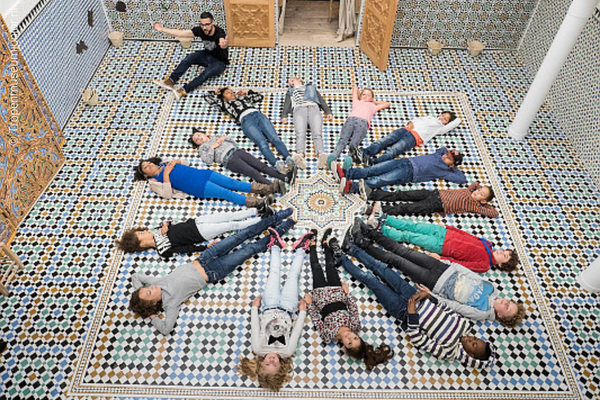What a visit to a museum can mean for children

When I tell adults that I work at the Tropenmuseum Junior – the children’s museum of the Tropenmuseum in Amsterdam – this often brings to mind visits they paid to an exhibition when they were young. When I ask them about their memories, I get an idea of what lasting impressions they have.
“That I danced the Condor. That I was in charge of a restaurant. That we travelled on a train through Bombay. That everything was real and not just made up. That it was not boring, like other museums, where you could only look and listen. That the drums really spoke to us. I can still remember the song and dance. That we went on a bus ride through Morocco. That we made a short film. That I was in love with the museum guide, she was the best storyteller ever.”
Sometimes we hear how a visit brought about a big decision in their lives, a journey or a study.
What can we learn from this, in addition to surveys of people’s experiences and what we experience every day?
- that children take away a good experience of visiting a museum that lasts a lifetime.
- that activities play a crucial role in people’s experience and memory. Looking and listening is not always enough. Learning by doing has to be part of it.
- that skilled people who work in museums with children arethe best and most interactive medium for providing a meaningful experience.
Tropenmuseum Junior is a children’s museum that was set up in 1975. In the past forty years, we have developed a method that consists of a number of basic principles: reality, immersion, dynamism, relation, personal, surprise, and share.
Our exhibitions are brought to life for children by specially trained museum guides. Most collections are hands-on and are used by the children during the activities. The activities fit into a storyline that is packed with details, stimulating both recognition and memory.
In the exhibitions at the Tropenmuseum Junior, the children get to work finding out information, personal stories, questions, little tasks and collections in a three-dimensional exhibition design where they feel at home.
Our aim is to let the children realise the benefits of finding out how other people live. By doing this, we make something strange into something familiar, presenting the unknown as a part of everyday life. The diversity in today’s society means we have to be able to deal with differences and allow people to experience these as a part of their own lives. In this way, we contribute to bringing up world citizens.
The Netherlands has an amazing array of museums and children’s culture. In 1994 the International Children’s Museum Organisation, Hands On!, was set up in the Netherlands and the first International Children’s Museum Award of Hands On! was awarded to Tropenmuseum Junior.
Advice for teachers
You can create special museum experiences in all countries. Here are a few tips for teachers who are thinking of visiting a museum:
- If possible, choose a museum with guides who can offer a programme that fits the needs of your children. Don't be afraid to tell the museum if you have any special requirements, so a made-to-measure programme can be prepared for you.
- Ask about the means of information transfer. Is it just looking and listening and going around in groups? Or do pupils have an independent role, with tasks and/or questions? Are there points where physical activities take place?
- Is the information transfer story-based (perhaps with details that help to create images in the children's minds)? A story will be remembered better than just a list of information.
- What major points of interest are presented to the children so that they can link these into their own lives and experiences? Does this take place at the museum and is learning material provided for preparatory work and for working through afterwards?
If you are going to go around a museum with a class of children without any guides, you can still do this yourself. It is a good idea to give your pupils concrete questions or tasks to take with them. For example:
- Which item or artwork would you like to have at home? Where would you put it or hang it up and why?
- Perhaps one of the items or artworks is telling you a story. What does it say?
- Look at the item/artwork for 20 seconds. Turn around so you cannot see it. Then get classmates to ask you questions. How many can you answer?
We often share our experiences with other museums and education professionals. If you are in Amsterdam, then we would be pleased to make an appointment so you can take a closer look at how we operate.
Liesbet Ruben has been working at the Tropenmuseum Junior since 1979; she is an exhibition-maker, part of a small team developing everything from scratch. The museum is part of the Tropenmuseum, which, along with three other museums, forms the Nationaal Museum van Wereldculturen in the Netherlands. Tropenmuseum Junior has become famous through its appealing concept of seeing, touching, experiencing and doing. Liesbet writes children’s books for each exhibition, six of which have won awards; she also has a great deal of international experience, including in the area of expert training.
Related Teacher Academy course: |
